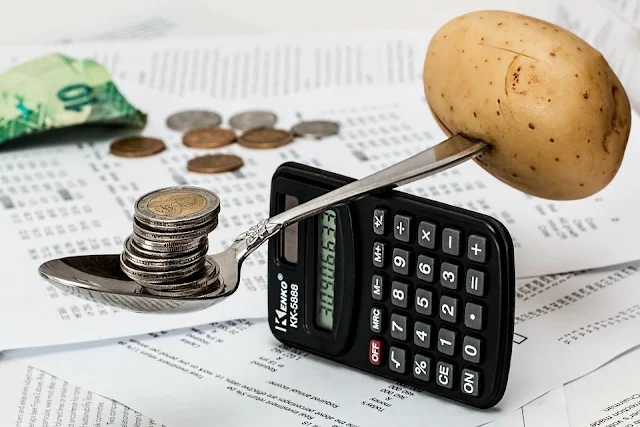Ad Code
Translate
Smart strategies for trading on crypto exchanges
April 23, 2025
Discover Honeybee Pharmacy (2025 Guide Important Consumer Tips)
October 14, 2025
What is Ozempic (semaglutide)? (Updated in 2025)
January 30, 2025
How To Find Suitable Properties In Cyprus?
May 22, 2025
Posture Bra: Improving Back Support and Comfort
April 23, 2025
You Need to Start a Household Budget
Khabza Mkhize
March 25, 2024

A household budget is an essential tool for personal finance. If you don’t have a household budget, find out why you should make one and how to get started.
Meeting Savings Goals
Everyone has savings goals that they’re trying to meet. The savings could be for something small, like an emergency fund. The savings could be for something far more ambitious, like your retirement or your children’s education fund.
Paying Down Debt
A household budget can help you pare down debt, whether you have maxed out credit cards or outstanding loans. You can slowly tackle that problem until you’re in the clear.
Otherwise, you can go insolvent, and you may have to choose between filing for a debt proposal or filing for bankruptcy — click here to better understand the differences between bankruptcy and a proposal and see what benefits each one offers. A household budget is a tried-and-tested debt management method. This is why licensed insolvency trustees recommend it to clients who want to regain financial stability.
Otherwise, you can go insolvent, and you may have to choose between filing for a debt proposal or filing for bankruptcy — click here to better understand the differences between bankruptcy and a proposal and see what benefits each one offers. A household budget is a tried-and-tested debt management method. This is why licensed insolvency trustees recommend it to clients who want to regain financial stability.
How Do You Make a Household Budget?
Take out a spreadsheet and pencil to make a simple household budget. At the top, put in your monthly income. Then, slowly go through your expenses to see how much of your income they eat up.
Start with your fixed expenses—these are costs you can’t miss payments on and can’t cut down on. These include things like mortgage/rent, house insurance, and property taxes. Then, go with your variable costs—these are categories that can be modified for the sake of savings. These include things like groceries, transportation, and entertainment.
Take a look to see how much money you have left. Then, see if you can make that amount bigger by shrinking your variable costs. The more cuts you can manage, the more cash you’ll save.
If you’re having trouble doing the calculations on paper, you can always download budgeting apps like You Need a Budget and Mint on your smartphone.
Start with your fixed expenses—these are costs you can’t miss payments on and can’t cut down on. These include things like mortgage/rent, house insurance, and property taxes. Then, go with your variable costs—these are categories that can be modified for the sake of savings. These include things like groceries, transportation, and entertainment.
Take a look to see how much money you have left. Then, see if you can make that amount bigger by shrinking your variable costs. The more cuts you can manage, the more cash you’ll save.
If you’re having trouble doing the calculations on paper, you can always download budgeting apps like You Need a Budget and Mint on your smartphone.
How Do You Cut Variable Costs?
You need to trim variable costs, but where should you start?Take a look at your spending on food. You can buy less takeout and go out to restaurants less. And you can be strategic about your grocery shopping:
- Use coupons
- Take advantage of discounts and sales
- Don’t shop when you’re hungry or in a rush
- Make a grocery list and stick to it
- Buy less meat
And if you spend a lot of money on entertainment, you should consider cheaper alternatives. For instance, instead of paying for movie tickets and $20 bags of popcorn, you can stream movies and make popcorn at home. It’s a similar experience at a fraction of the price.
You shouldn’t be blindly spending your paycheques. You should know precisely how much money you have available to spend and how much has to sit in the bank. A household budget is the perfect tool for tracking your finances, reaching your savings goals, and avoiding deep financial trouble.
Featured Post
DL Mining Launches Ethereum Contract Participation Service, Helping Users Earn $2K Stable Daily Returns
Zizo Gala-Mkhize-
September 23, 2025
Soapie Teasers
Sister Sites
Most Popular
List of 6,000+ Dofollow Commentluv Blogs FREE (Updated 2025)
January 16, 2025
Smart strategies for trading on crypto exchanges
April 23, 2025
Popular posts
List of 6,000+ Dofollow Commentluv Blogs FREE (Updated 2025)
January 16, 2025
What is Ozempic (semaglutide)? (Updated in 2025)
January 30, 2025
Footer Menu Widget
Created By Blogspot Theme | Distributed By Gooyaabi Templates


Social Plugin